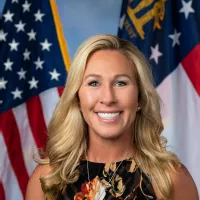Benoit B. Mandelbrot, a Polish-born French-American mathematician, is renowned for his work in fractal geometry. He coined the term "fractal" and developed a theory of "roughness and self-similarity" found in nature. Mandelbrot's wide-ranging interests extended to practical sciences, focusing on the complexity and unpredictable aspects of physical phenomena.
1900: Mandelbrot Analyzes Cotton Prices
In his early research, Benoit Mandelbrot analyzed daily cotton price data from as far back as 1900, discovering that price changes did not follow a Gaussian distribution.
1920: Szolem Mandelbrojt Moves to Paris
Around 1920, Szolem Mandelbrojt, Benoit Mandelbrot's uncle, moved to Paris.
November 1924: Birth of Benoit Mandelbrot
Benoit B. Mandelbrot was born in November 1924, in Warsaw, Poland, to a Lithuanian Jewish family.
1944: Mandelbrot Returns to Paris, Begins Studies
In 1944, Benoit Mandelbrot returned to Paris and began studying at the Lycée du Parc in Lyon.
1945: Mandelbrot Attends École Polytechnique
From 1945 to 1947, Benoit Mandelbrot attended the École Polytechnique, where he studied under Gaston Julia and Paul Lévy.
1947: Mandelbrot Studies at California Institute of Technology
From 1947 to 1949, Benoit Mandelbrot studied at the California Institute of Technology, earning a master's degree in aeronautics.
1949: Mandelbrot Returns to France, Continues Studies
After completing his master's degree at Caltech in 1949, Benoit Mandelbrot returned to France.
1949: Mandelbrot Joins Centre National de la Recherche Scientifique
Benoit Mandelbrot joined the Centre National de la Recherche Scientifique as a staff member in 1949, where he worked until 1958.
1951: Mandelbrot Expands Research into Applied Fields
From 1951 onward, Benoit Mandelbrot broadened his research scope, working on problems and publishing papers not only in mathematics but also in applied fields such as information theory, economics, and fluid dynamics.
1952: Mandelbrot Earns PhD in Mathematical Sciences
In 1952, Benoit Mandelbrot received his PhD degree in Mathematical Sciences from the University of Paris.
1955: Mandelbrot Marries Aliette Kagan
Benoit Mandelbrot married Aliette Kagan in 1955.
1958: Mandelbrot Joins IBM
In 1958, Benoit Mandelbrot and his wife, Aliette, moved to the United States, where he joined IBM's research staff at the Thomas J. Watson Research Center in Yorktown Heights, New York.
1958: Mandelbrot Begins Career at IBM
In 1958, Benoit Mandelbrot began his 35-year career at IBM, marking a significant milestone in his professional journey.
1967: Mandelbrot Publishes Influential Paper on Self-Similarity
In 1967, Mandelbrot published "How Long Is the Coast of Britain? Statistical Self-Similarity and Fractional Dimension", introducing concepts of fractals and their dimensions.
1974: Mandelbrot Proposes New Explanation for Olbers' Paradox
In 1974, Mandelbrot offered a new explanation for Olbers' paradox ("dark night sky" riddle) using fractal theory, suggesting a non-homogeneous distribution of stars in the universe.
1975: Mandelbrot Coins the Term "Fractal"
Benoit Mandelbrot coined the term "fractal" in 1975 to describe the complex geometric structures he was studying. He first published his ideas in his French book, "Les Objets Fractals: Forme, Hasard et Dimension."
1977: Publication of "Fractals: Form, Chance and Dimension"
In 1977, Benoit Mandelbrot's influential book, "Fractals: Form, Chance and Dimension" was published, which was the translated version of his earlier French book.
1979: Introduction of the Mandelbrot Set
In 1979, Benoit Mandelbrot introduced the Mandelbrot set while studying mathematical objects known as Julia sets.
1980: Discovery of the Mandelbrot Set
In 1980, Benoit Mandelbrot discovered the Mandelbrot set while using computer graphics to create and display fractal geometric images.
1982: Publication of "The Fractal Geometry of Nature"
Benoit Mandelbrot published "The Fractal Geometry of Nature" in 1982, expanding and updating his earlier ideas on fractals. This book was crucial in bringing fractals into the mainstream of mathematics, both professionally and popularly.
1987: Mandelbrot Leaves IBM
In 1987, Benoit Mandelbrot left his position at IBM after 35 years when the company chose to discontinue pure research in his division.
November 1990: Mandelbrot Appointed Chevalier in the Legion of Honour
In November 1990, Benoit Mandelbrot was made a Chevalier in France's Legion of Honour.
1993: Mandelbrot Receives Wolf Prize in Physics
Benoit Mandelbrot was awarded the Wolf Prize for Physics in 1993.
1999: Mandelbrot Achieves Tenure at Yale
Benoit Mandelbrot obtained his first tenured position at the age of 75 at Yale University in 1999.
2000: Mandelbrot Receives Lewis Fry Richardson Prize
In 2000, Benoit Mandelbrot was honored with the Lewis Fry Richardson Prize by the European Geophysical Society.
December 2005: Mandelbrot Becomes Battelle Fellow
Benoit Mandelbrot was appointed as a Battelle Fellow at the Pacific Northwest National Laboratory in December 2005.
2005: Mandelbrot Retires from Yale
Benoit Mandelbrot retired from his position as Sterling Professor of Mathematical Sciences at Yale University in 2005.
January 2006: Mandelbrot Promoted to Officer of the Legion of Honour
In January 2006, Benoit Mandelbrot was elevated to the rank of Officer of the Legion of Honour in France.
2006: Mandelbrot Delivers Einstein Lectureship
The American Mathematical Society hosted Benoit Mandelbrot for the prestigious Einstein Lectureship in 2006.
May 2010: Mandelbrot Receives Honorary Degree from Johns Hopkins University
Johns Hopkins University awarded Benoit Mandelbrot an honorary degree at their May 2010 commencement ceremony.
October 2010: Death of Benoit Mandelbrot
Benoit B. Mandelbrot passed away in October 2010.
October 2010: Benoit Mandelbrot Passes Away
Benoit Mandelbrot died on October 14, 2010, at the age of 85 from pancreatic cancer. His contributions to mathematics and science left a significant impact, as noted by mathematician Heinz-Otto Peitgen.
2012: Publication of Mandelbrot's Autobiography
In 2012, Benoit Mandelbrot's autobiography, "The Fractalist: Memoir of a Scientific Maverick," was published posthumously.
Mentioned in this timeline
California is a U S state on the Pacific Coast...
Japan is an East Asian island country situated in the...
France officially the French Republic is primarily located in Western...

Books are a means of storing information as text or...

War is defined as an armed conflict involving the organized...
Poland officially the Republic of Poland is a Central European...
Trending
23 minutes ago Penny Oleksiak, Olympic Champion, Suspended Two Years for Anti-Doping Rule Violation.
24 minutes ago New Jersey American Water Announces 2025 Community Grants; Residents Seek Repairs.
24 minutes ago Plymouth Police Officer Shoots Armed Man in Parking Lot After Disturbance Call
1 hour ago Waste Management: Traceability Innovation, Offshore Drilling Market, and Thanksgiving Turkey Carbon Footprint.

1 hour ago Elle Duncan leaves ESPN for Netflix sports role amid analyst criticism.

1 hour ago Kristi Noem's deportation flight decision faced scrutiny after judge's order, DOJ reveals call.
Popular
Aftyn Alyssa Behn is an American politician currently serving as...

William Franklin Graham III commonly known as Franklin Graham is...

Candace Owens is an American conservative political commentator and author...

XXXTentacion born Jahseh Dwayne Ricardo Onfroy was a controversial yet...

Marjorie Taylor Greene known as MTG is a U S...

Cristiano Ronaldo often nicknamed CR is a Portuguese professional footballer...
